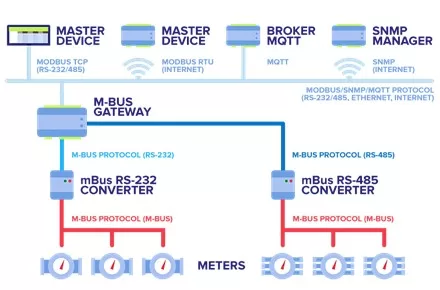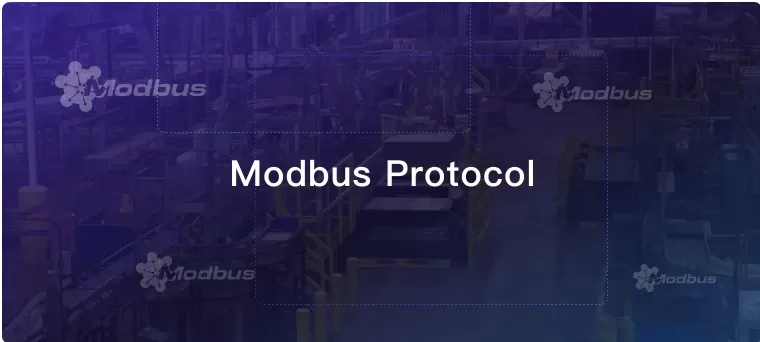Introduction
The Industrial Internet of Things (IIoT) is revolutionizing modern industries by enabling unprecedented levels of connectivity, data analysis, and automation. This transformation relies on robust communication protocols that facilitate seamless data exchange between a myriad of sensors, devices, and systems. Among these protocols, Modbus stands out for its simplicity, reliability, and widespread adoption.
Originally developed in 1979 by Modicon (now Schneider Electric) for use with programmable logic controllers (PLCs), Modbus has evolved into a de facto standard for industrial communication. Its longevity and adaptability have cemented its place in both legacy systems and contemporary IIoT applications. The protocol’s ability to facilitate communication in various industrial environments has made it a cornerstone for connecting devices and systems across sectors such as manufacturing, energy, and building automation.
This article explores the role of Modbus in IIoT, detailing its technical aspects, benefits, and real-world applications. Through this comprehensive examination, we aim to demonstrate how Modbus can drive efficiency, scalability, and innovation in industrial settings.
Understanding Modbus Protocol
Modbus operates on a client-server (master-slave) architecture. In this model, a master device (client) initiates requests, while one or more slave devices (servers) respond. This architecture ensures a straightforward communication flow, making Modbus easy to implement and manage.
The protocol uses a set of predefined functions to read and write data. The primary data types in Modbus include:
- Coils: Single-bit, read-write variables used to represent discrete outputs.
- Discrete Inputs: Single-bit, read-only variables used to represent discrete inputs.
- Holding Registers: 16-bit, read-write registers used for general-purpose data storage.
- Input Registers: 16-bit, read-only registers used for storing input data.
These functions enable Modbus to handle a wide range of industrial data, from simple on/off signals to complex numerical values.
Modbus communication occurs through a series of function codes, which specify the type of action to be performed, such as reading input registers or writing to coils.
Modbus supports various transmission mediums.
Table 1: Types of Modbus Protocols
| Type of Modbus Protocol | Transmission | Data Format | Use Case |
| Modbus RTU (Remote Terminal Unit) | Serial communication (RS-232 or RS-485) | Binary | Widely used in industrial environments for its reliability and simplicity. |
| Modbus ASCII | Serial communication | ASCII characters | Less common than RTU; used where ASCII is required for readability. |
| Modbus TCP/IP | Ethernet | TCP/IP packets | Ideal for modern networked environments, allowing Modbus devices to communicate over local area networks (LANs) and the internet. |
Importance of Modbus in Industrial Applications
The Modbus protocol plays a crucial role in industrial applications due to its robustness, simplicity, and widespread adoption. Over the years, Modbus has become one of the most widely used protocols in industrial environments. Its longevity and consistent updates have ensured its relevance, making it a reliable choice for both legacy systems and modern industrial applications. The protocol’s widespread adoption means that a vast array of devices and systems are already compatible with Modbus, facilitating easy integration and interoperability.
- Compatibility with Legacy Systems
One of the significant advantages of Modbus is its compatibility with legacy systems. Many industrial facilities operate a mix of old and new equipment, and Modbus provides a bridge that allows these disparate systems to communicate seamlessly. This backward compatibility ensures that organizations can integrate new technologies without the need for extensive overhauls of their existing infrastructure. As a result, Modbus helps protect investments in legacy equipment while enabling gradual upgrades to more advanced systems.
- Ease of Implementation
Modbus is known for its simplicity and ease of implementation. The protocol’s straightforward master-slave (client-server) architecture and clear function codes make it relatively easy to set up and maintain. Engineers and technicians can quickly learn and deploy Modbus in various industrial settings, reducing the time and cost associated with training and implementation. This simplicity also translates to lower maintenance costs and easier troubleshooting, which are critical factors in industrial environments where downtime can be costly.
- Cost
The simplicity and widespread adoption of Modbus contribute to its cost-effectiveness. By using a common and well-understood protocol, companies can reduce the expenses associated with custom solutions and proprietary communication systems. The availability of off-the-shelf Modbus-compatible devices and software further lowers costs, making it an economical choice for many industrial applications. This cost efficiency is particularly important for small and medium-sized enterprises (SMEs) that need reliable communication solutions without the high costs typically associated with more complex protocols.
- Robustness and Reliability
Modbus has proven its robustness and reliability in harsh industrial environments. Its design allows it to function effectively in settings with significant electrical noise, extreme temperatures, and other challenging conditions. This durability makes Modbus a trusted choice for critical applications where reliable communication is essential. Industries such as manufacturing, energy, and transportation rely on Modbus to ensure continuous and accurate data exchange, which is vital for maintaining operational efficiency and safety.
- Scalability and Flexibility
Modbus’s scalability and flexibility are key factors in its importance to industrial applications. The protocol can be used in small-scale operations as well as large, complex industrial systems. Its ability to support various transmission mediums, including serial (Modbus RTU and ASCII) and Ethernet (Modbus TCP/IP), allows it to adapt to different networking requirements and scales. This flexibility ensures that Modbus can meet the communication needs of diverse industrial applications, from simple sensor networks to sophisticated automated systems.
Overview of Modbus in IIoT
Modbus is particularly well-suited for IIoT applications due to its simplicity, robustness, and flexibility. Its ability to seamlessly integrate with both legacy systems and modern IoT platforms makes it an ideal candidate for IIoT deployments. Key reasons for its suitability include:
Modbus’s straightforward protocol structure and easy-to-understand commands make it accessible for a wide range of industrial applications. This simplicity reduces the learning curve and implementation time, making it an attractive option for engineers and technicians.
Modbus provides reliable communication in industrial environments, even under harsh conditions. Its proven track record in ensuring accurate data exchange and minimal communication errors is essential for critical IIoT applications.
Modbus Communication Models
Modbus operates primarily on two communication models: the client-server model and the master-slave model.
- Client-Server Model: In this model, a client (master) initiates requests to a server (slave), which then processes these requests and responds accordingly. This model is typically used in Modbus TCP/IP implementations where Ethernet networks are involved.
- Master-Slave Model: This model is more common in Modbus RTU and Modbus ASCII implementations. The master device initiates commands, and the slave devices respond. This model is suitable for serial communication over RS-232 or RS-485 networks.
Implementation of Modbus over TCP/IP in IIoT Systems
Modbus TCP/IP is an extension of the traditional Modbus protocol tailored for Ethernet networks, encapsulating Modbus messages within TCP/IP packets. This allows for seamless communication over local area networks (LANs) and wide area networks (WANs), making it ideal for modern Industrial Internet of Things (IIoT) applications. The image illustrates the structure of Modbus RTU and Modbus TCP/IP messages, highlighting the differences in their encapsulation and addressing.
Key Aspects of Implementing Modbus TCP/IP in IIoT Systems
- Network Configuration:
- IP Address Assignment: Each device on the network is assigned a unique IP address, facilitating communication over the Ethernet network. This setup integrates Modbus devices with existing IT infrastructure, ensuring they can participate in networked data exchange.
- Addressing: The Modbus TCP/IP message includes a Unit ID field within the Modbus Application Protocol (MBAP) header, which identifies the specific device within the network.
- Data Encapsulation:
- Message Structure: Modbus TCP/IP messages are encapsulated within TCP/IP packets. The Modbus Application Data Unit (ADU) consists of the MBAP header and the Protocol Data Unit (PDU). The MBAP header includes fields for Transaction ID, Protocol ID, Length, and Unit ID, providing necessary metadata for communication.
- Error Checking and Reliability: The encapsulation within TCP/IP ensures reliable data transmission with built-in error checking and recovery mechanisms, enhancing the robustness of communication.

Figure 1: Modbus TCP/IP Encapsulation
Combining Modbus with Edge Computing and Cloud Services
Modbus devices can interface with edge computing platforms to perform local data processing and analytics. For example, an edge device can collect data from Modbus-enabled sensors, perform preliminary analysis, and then send only the relevant data to the cloud for further processing. This setup enhances efficiency and reduces the load on central servers.
By using Modbus TCP/IP, industrial data can be transmitted over the internet to cloud-based IIoT platforms. Cloud services such as AWS IoT, Microsoft Azure IoT, and Google Cloud IoT provide tools for data visualization, predictive maintenance, and machine learning, leveraging the data collected from Modbus devices.
Gateways and converters play a crucial role in integrating Modbus devices with modern IIoT platforms by enabling communication between different protocols and networks.
- Protocol Converters: These devices translate Modbus RTU/ASCII signals into Modbus TCP/IP or other IoT protocols like MQTT and CoAP, allowing Modbus devices to communicate over Ethernet and internet networks.
- IoT Gateways: IoT gateways connect Modbus devices to cloud platforms, handling data aggregation, protocol conversion, and secure transmission. For example, an IoT gateway can collect data from multiple Modbus RTU devices, convert the data to MQTT, and transmit it to a cloud-based IIoT platform.
Use Case: Smart Manufacturing Integration
In a smart manufacturing scenario, a factory uses Modbus-enabled PLCs and sensors to monitor production processes. An IoT gateway collects data from these devices and uses a protocol converter to translate Modbus RTU data into MQTT messages. These messages are then sent to a cloud platform like AWS IoT.

Figure 2: Use Case Modbus Gateway
In the cloud, the data is stored, analyzed, and visualized in real-time dashboards. Predictive analytics models use the data to forecast equipment maintenance needs, optimize production schedules, and identify inefficiencies. The results are sent back to the factory floor, where edge devices can make real-time adjustments to the production process, improving efficiency and reducing downtime.
Conclusion
The Modbus protocol has established itself as a cornerstone in industrial communication, particularly within the Industrial Internet of Things (IIoT) ecosystem. Originally developed for programmable logic controllers (PLCs), Modbus’s simplicity, reliability, and widespread adoption have made it indispensable for modern industrial applications. Its client-server architecture, support for various data types, and compatibility with multiple transmission mediums, including serial communication (Modbus RTU and ASCII) and Ethernet (Modbus TCP/IP), enable seamless integration across diverse industrial systems.
Modbus’s importance in industrial applications is underscored by its compatibility with legacy systems, ease of implementation, cost-effectiveness, robustness, and scalability. These attributes facilitate efficient communication and interoperability, making Modbus a preferred choice for many industries.
In the context of IIoT, Modbus offers significant advantages, including real-time data processing, robust communication, and interoperability with modern IoT platforms. The integration of Modbus with edge computing and cloud services enhances efficiency and scalability, while gateways and converters enable seamless communication between different protocols.
Real-world applications and case studies demonstrate Modbus’s versatility in smart manufacturing, energy management, building automation, water management, and logistics. These examples highlight Modbus’s role in driving operational efficiency, reducing downtime, and improving overall productivity.
As industries continue to evolve towards more connected and automated systems, Modbus’s role in IIoT will remain crucial, supporting the digital transformation and innovation in industrial environments.
References
- Sherzod Elamanov et al. “Interworking between Modbus and internet of things platform for industrial services”, Digital Communications and Networks, 2024, doi.org/10.1016/j.dcan.2022.09.013.
- Liyanage et al. “Driving forces for multi-access edge computing (mec) iot integration in 5G”, ICT Express, 2023

